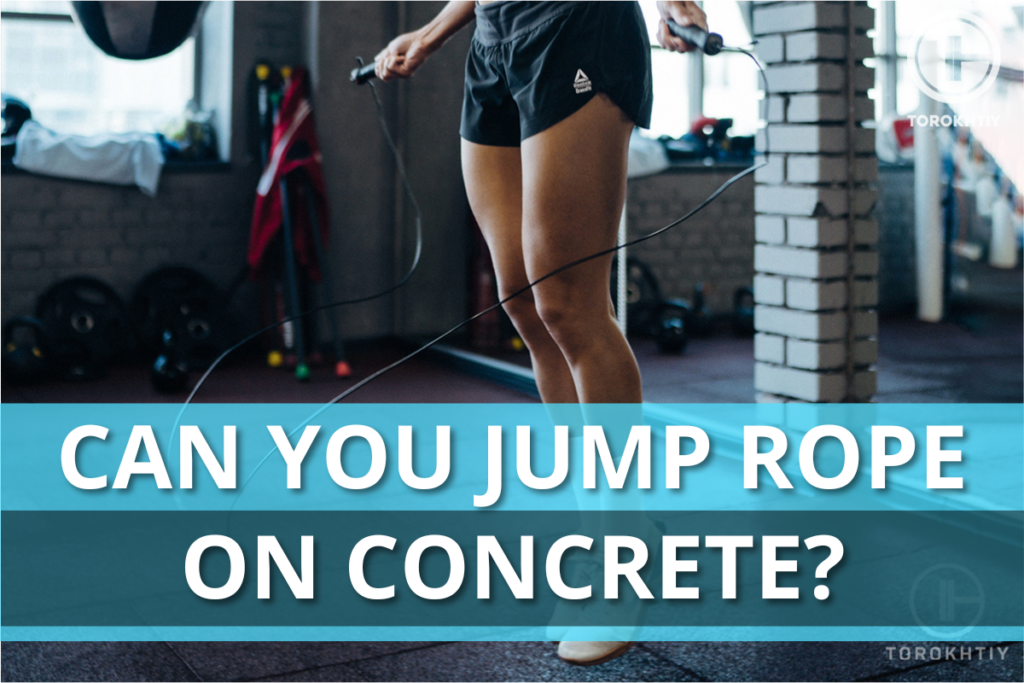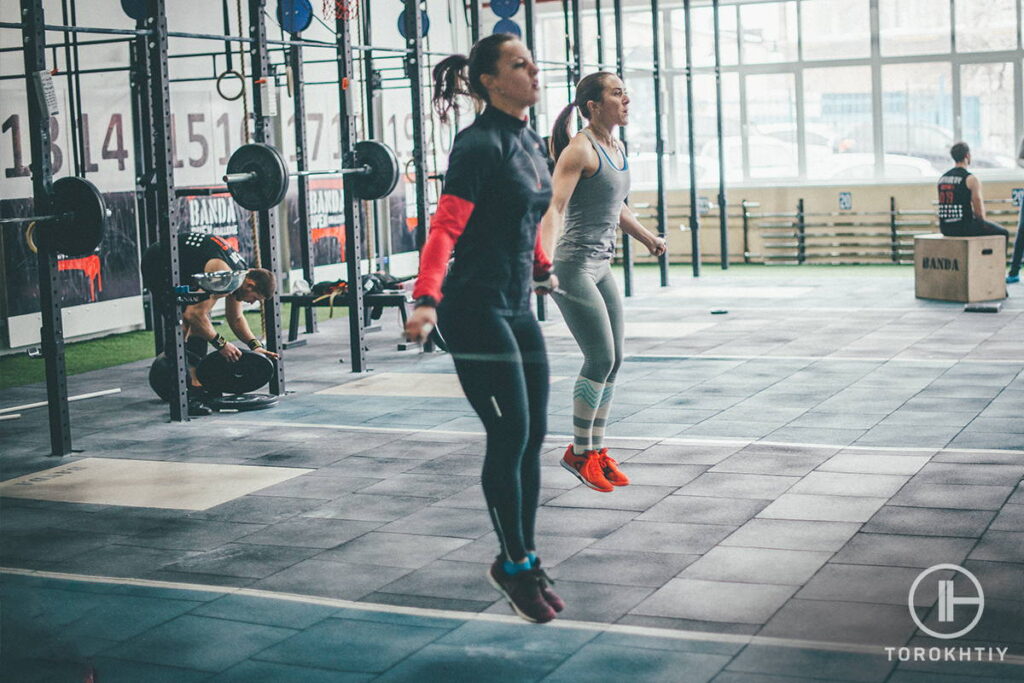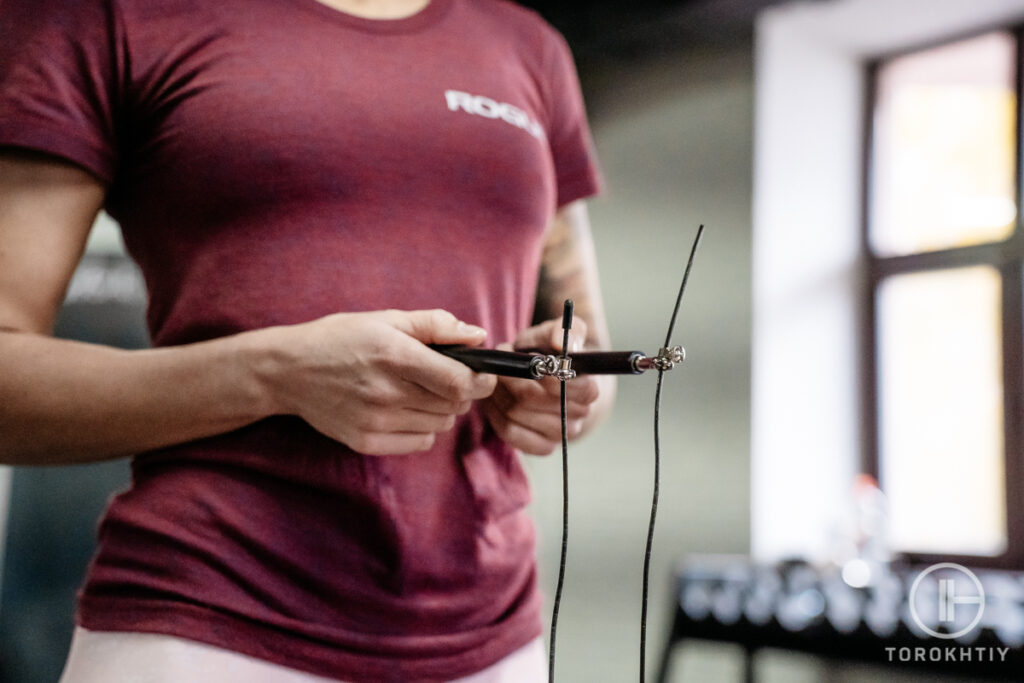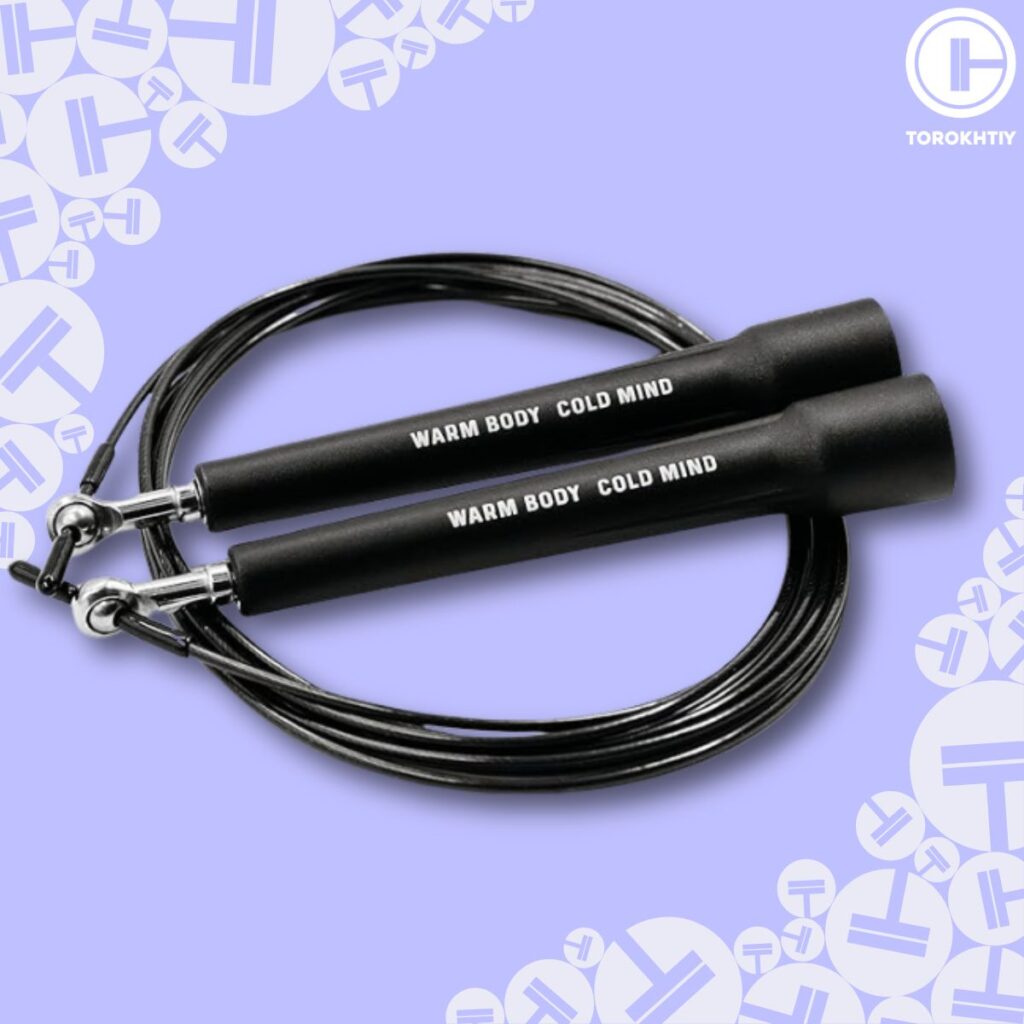Can You Jump Rope on Concrete? (What Rope to Pick?)
Author:
Unlock your full potential by engaging with our experts and community! Have questions about your fitness journey or looking for expert advice on weightlifting techniques? Don’t hesitate — leave a comment below and Ihor Shymechko will provide a personalized answer and insights to help you reach your goals.
Torokhtiy is reader-supported. Some links are affiliate links, and we may earn a commission at no extra cost to you. See our disclosure page for details.
Jumping rope is great cardio and you can do it pretty much anywhere. But when it comes to jumping rope on concrete, a lot of people wonder if it’s safe or if it will ruin their rope. Can you jump rope on concrete? The short answer is yes, but there’s more to consider to make sure you’re protecting both yourself and your equipment.
Concrete is one of the most common, but also one of the hardest surfaces you can choose, which means it can be tough on your jump rope and your joints. You need to choose the right kind of rope to avoid wear and tear, and you also need to understand what kind of impact on your body jumping on such a hard surface will have.
Stay tuned because we’ll share all of this with you!

4 Things to Consider When Jumping Rope on Concrete?
Although it’s possible to jump rope on concrete, you shouldn’t just dive into it – there are things you need to consider.
With such a hard surface, you need the right approach, so here are some things to factor in to make your experience enjoyable and safe.
1. Choose the Right Rope
You can just use any old rope – you want a durable, coated cable that can handle the abrasive nature of concrete. Ropes with PVC or vinyl coating are ideal because they offer an extra layer of protection against wear and tear.
Don’t use ropes made from leather or beads because they’ll get ruined super fast on any rough surfaces.
2. Protect Your Joints
The impact of jumping on concrete can be really harsh on your joints, especially if you’re jumping for a long time. To help with this, wear shoes with a good amount of cushioning that can absorb some of the shock. Also, make sure to warm up properly to get your muscles and joints ready for the exercise, and include stretching into your routine to keep your body agile and prevent stiffness.
3. Use a Mat
A portable jump rope mat can be a great thing to have, especially if you’re frequently jumping on concrete. It will protect your rope from abrasion and reduce the impact on your joints. Look for a mat that’s thick enough to provide cushioning but firm enough so you can move easily, without bouncing too much.
4. Adjust Your Technique
If you’re jumping on concrete, you’ll probably have to tweak your technique to accommodate the hard surface. Try to jump just high enough to clear the rope to reduce the impact on landing. Keep your knees bent a little and use your forefoot to absorb the shock as you land.

What to Look For in an Outdoor Jump Rope for Concrete?
When you’re looking for the best jump rope for outdoor use, here are some factors to look out for and the things I took into consideration when choosing the best jump ropes.
1. Cable Properties
The properties of the cable, namely the material used, cable width, and weight, determine how quickly it can move. A high-quality, thinner wire will move the quickest whilst a thicker rope will move slower but provide more protection for yourself and against the ground. If you want to skip faster, go with a thinner cable.
2. Handle Properties
Jump rope handles vary mainly in the casing material used and the type of grip. When choosing a jump rope, consider the handle length and width against your hand size and make sure it’s suitable for you.
Next, think about what you’re going to be using the jump rope for. If you’re doing lots of high-intensity skipping, you might be best getting a rope with memory foam handles or handles that feature tapered ends. The type of handle best suited to you can also be sometimes down to personal preference and what feels most comfortable.

3. Adjustability
When choosing a jump rope, adjustability is probably the most important factor. You need to rope to fit your height and arm length correctly so it can move as intended and allow you to skip efficiently. Some jump ropes are non-adjustable and some in set lengths while some can be adjusted using clever mechanisms or with wire cutters.
If you don’t want to deal with altering the rope, make sure to follow the sizing guide correctly and pick a non-adjustable one.
If you want to adjust the rope yourself or need to adjust it to different lengths, make sure to get an adjustable one and check how easy the adjustment mechanism is to use. Some ropes also require wire cutters that aren’t included in the standard package.
4. Rotation Mechanism
Jump ropes are designed with different rotation mechanisms which affect the way they move. Bearings rotate smoothly around a full 360-degree circle whilst bushings have a more limited range of motion.
If you want a jump rope that’s more forgiving when you make mistakes, choose one with bearings. Bearings can also be more suitable for faster jump rope speeds if that’s something you prefer.

If you’re looking for a jump rope that’s a little slower and provides more feedback to the user, a rope with bushings may be a better option. Alongside this, they tend to be less expensive than bearings.
5. Portability
If you need to regularly carry your jump rope around, portability should be taken into account. Check how easy the cable is to wrap up without getting out of shape or tangled. Most jump ropes come with convenient carry bags making the rope easy to store away in your gym bag when not in use.
WBCM Adjustable Jump Rope
WBCM has created an excellent jump rope that combines a strong surgical steel cable with articulating Nylon resin handles to give you a durable jump rope designed to last.
The cable is covered in 2.5mm of Nylon that moves fast through the air if you’re looking to do some faster skipping workouts with the articulated handles featuring tapered ends helping to keep a firm grip.
WBCM Adjustable Jump Rope uses a parented 4-bearing system, with 2 bearings on the handle and 2 on the tips to keep the steel cable secure.
The lightweight construction combined with the clever design features gives you a jump rope that you can use to perform double-unders with ease. What’s even better is that they include a spare replacement cable in case the old one wears out and put it all in a convenient carry bag.
FAQ
Is It Okay to Jump Rope on Concrete?
Jump roping on concrete is one of the most common ways to do it. The concrete texture provides you with a solid base so you don’t slip and allows the rope to move with the least ground resistance.
Is It Better to Jump Rope on Grass or Concrete?
Whilst concrete is the most commonly used jump rope surface, jumping rope on grass might be a better option for some people. If you have bad joints or just prefer to jump rope on a softer surface, feel free to get on the grass.
How Do I Protect My Jump Rope on Concrete?
Most cable wires are wrapped in a protective rubber layer that’s designed to withstand repeated heavy impacts against tough surfaces such as concrete. If you’re looking to give your jump rope some extra protection, consider buying a foam mat and placing it on top of the concrete.
Another good idea is to wrap strong tape around the bit of the rope that makes contact with the concrete, but make sure this doesn’t alter the movement or speed of the rope.
Conclusion
Jumping rope is a popular and fun way to increase your fitness and learn new skills. If you’re looking for a jump rope suitable for concrete, make sure to choose one that can handle it. Ropes with PVC or coated wire are your best bet. Also, consider the weight of the rope; a heavier rope can give you better control and feedback, which is important on a high surface.
If you want my personal top pick jump rope, go with the WBCM Adjustable Jump Rope. It’s a high-quality, well-designed jump rope that’s fully customizable and easy to use.
Do you like to jump rope? What’s your favorite rope and have you tried the one I recommend?
Also read:
- What Is Digital Jump Rope
- Jumping Jacks vs Jump Rope
- How To Speed Jump Rope
- How To Criss Cross Jump Rope
- Jump Rope vs Other Exercises
- Jump Rope Guide
References:
- Jump Rope Workouts: The Best Jump Rope Workout // Men’s Journal:
https://www.mensjournal.com/health-fitness/best-jump-rope-workout/ - The Benefits of Jumping Rope Go Beyond Weight Loss // Healthline:
https://www.healthline.com/health/jumping-rope-to-lose-weight - Photos made by Torokhtiy Media Team
Why Trust Us?
With over 20 years in Olympic weightlifting, strength training, nutrition coaching, and general fitness our team does its best to provide the audience with ultimate support and meet the needs and requirements of advanced athletes and professional lifters, as well as people who strive to open new opportunities and develop their physical capabilities with us.
By trusting the recommendations of our certified experts in coaching, nutrition, and sports training programming, as well as scientific consultants, and physiotherapists, we provide you with thorough, well-considered, and scientifically proven content. All the information given in the articles concerning workout programming, separate exercises, and athletic performance, in general, is based on verified data.
The product testing process is described in more detail here.
Author: Ihor Shymechko
Pro Olympic Weightlifter, Coach
Best Results: Snatch – 208 kg,
C&J – 240 kg
Ihor has been a professional weightlifter since 1996, boasting over two decades of competition experience. His notable achievements include clinching the European Championship in 2009 and securing a silver medal in the 105kg division at the Senior World Championships in 2011. Ihor represented his country in the 2008, 2012, and 2016 Summer Olympics. After retiring from competitive weightlifting, he transitioned to coaching, leveraging his vast experience to guide athletes who now compete on both national and international stages.




Still have questions after reading our article? Unlock your full potential by engaging with our experts and community! Don’t hesitate — leave a comment below and Ihor Shymechko will provide a personalized answer and insights to help you reach your goals.